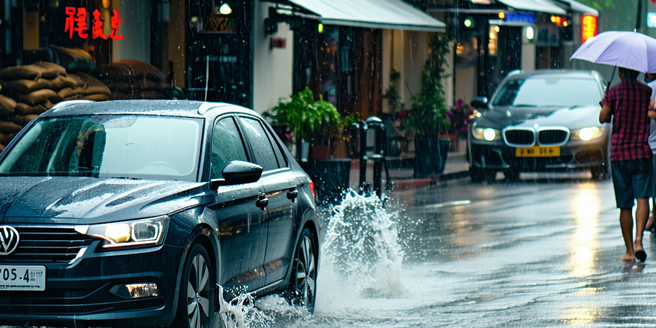
Understanding the Impact of Severe Rainfall
Severe rainfall events can lead to a multitude of challenges, from flooding to soil erosion. The increase in frequency and intensity of these events is often linked to climate change, making it essential to understand their causes and effects. Heavy rains can overwhelm drainage systems, leading to urban flooding, while in rural areas, they may cause landslides. It is crucial for communities and individuals to recognize the signals and take necessary precautions. Governments and researchers are seeking solutions through improved infrastructure and predictive models. Public awareness campaigns are vital to educate citizens about the potential risks and safety measures that can mitigate damage. Understanding the local geography and historical rainfall patterns further aids in preparation. By comprehensively understanding these impacts, communities can better adapt and reduce long-term vulnerabilities.
Preparing Your Home for Heavy Rain
Securing your home against heavy rain begins with regular maintenance and inspections. Clear gutters and downspouts allow water to flow away from your home efficiently, reducing the risk of roof leaks and foundational damage. Sealing windows and doors with weather stripping helps prevent water ingress. Consider installing a sump pump in your basement to address potential flooding issues. Landscaping plays a key role in drainage management; ensure your yard slopes away from your home, and use vegetation to absorb excess water. Sandbags are a practical emergency measure to divert water flow. Investing in a backup power source can be beneficial in case of outages during severe storms. Regularly review your homeowner’s insurance and understand your coverage for water damage. Proactive preparation significantly minimizes the risk heavy rains pose to your residence.
Choosing the Right Gear for Rainy Weather
Selecting the appropriate gear for rainy conditions is essential for comfort and safety. Start with a high-quality waterproof jacket, preferably with breathable fabric to prevent overheating. Pair it with waterproof pants for complete coverage. Footwear is critical; opt for waterproof boots with good traction to navigate slippery surfaces safely. An umbrella is a simple yet effective tool to keep you dry. Layering your clothing with moisture-wicking materials can help regulate body temperature. A water-resistant backpack or bag will keep your belongings safe from rain. For those needing to venture into extreme conditions, consider investing in specialty gear like gaiters or ponchos. Reflective gear increases visibility during gloomy weather, ensuring safety if you’re walking or biking. By equipping yourself properly, you stay comfortable and protected even in the heaviest downpours.
Staying Safe During Extreme Rain Events
Safety during extreme rain events involves careful preparation and vigilance. Listening to weather forecasts and heeding warnings issued by authorities can save lives. Create an emergency plan that includes evacuation routes and communication strategies with family members. Stock up on essentials such as food, water, batteries, and first aid supplies. During heavy rain, avoid unnecessary travel and stay indoors. Floodwaters can rise quickly, so never attempt to walk or drive through them. Secure outdoor furniture and any loose items that could become hazards in strong winds. Keep important documents in a waterproof container or digital backup accessible. Make sure all household members are aware of the location of safe areas and emergency kits. Being prepared and aware reduces panic and increases safety for you and your loved ones during severe weather.
Sustainable Practices to Mitigate Rain Damage
Implementing sustainable practices can greatly reduce the damage caused by heavy rains. Rain gardens are an effective and eco-friendly way to manage runoff; they slow down water flow and allow it to seep into the ground. Using rain barrels to collect rainwater for non-drinking purposes reduces strain on local water systems during storms. Permeable paving surfaces enable better water absorption, preventing excess runoff. Planting native vegetation enhances the local ecosystem’s resilience, as native plants typically require less water and maintenance. Green roofs help absorb rainwater, reducing runoff and providing added insulation. Homeowners should also consider adopting green building practices that emphasize water efficiency and durable construction materials. Community initiatives that promote awareness and action around sustainable water management are vital. Through these measures, communities can foster a balanced relationship with their environment.
